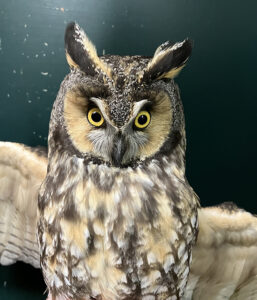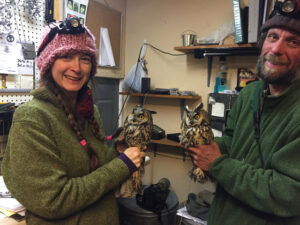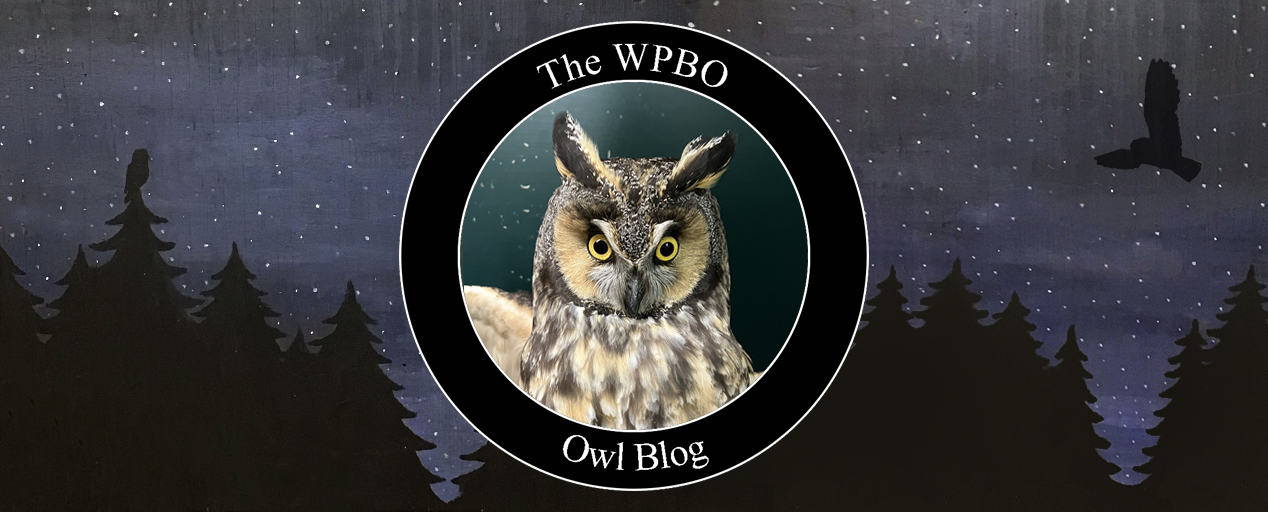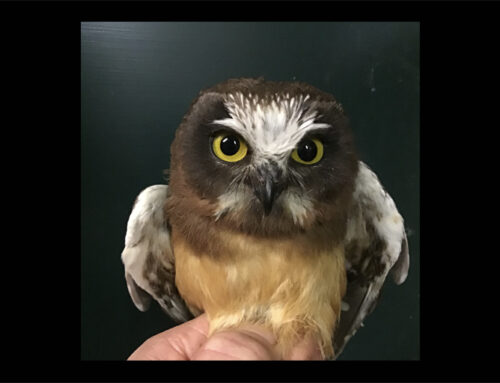Coming into this past week, we knew the weather would be a challenge, but we did not expect this. Since our last update, actually since March 15, we have only banded two owls. The season’s first Long-eared Owl (LEOW) was banded on the first net check on March 21. Conditions were not too bad that night, and we took that LEOW’s arrival early in the night as a sign that we might get our second little push of owls. Not only did we not get a push, but it took five nights before another owl arrived, a saw-whet that we banded last night. We’re not reading much into this or using it to predict what the owl migration will be like this spring. The weather patterns were absolutely terrible for migration over this period, so it’s not surprising that things stalled out, even though the owls stalled out more than we expected. Forecast models for the coming nights show no great systems headed our way, but things will hopefully improve. On the plus side, we keep reminding ourselves how much worse it would be if the trail conditions caused us to be on snowshoes right now.

Long-eared Owl. Photo by Nova Mackentley
Season Totals of Banded Owls
Northern Saw-whet Owls: 25
Long-eared Owls: 1
Total Owls: 26
~ Chris Neri & Nova Mackentley
2024 Spring Owl Banders
You can read the owl banders’ weekly blog posts and follow WPBO’s social media (Facebook, Instagram, and X) for owl banding highlights this season.
The spring owl banding season runs from March 15 through May 31.
Owl Banding Presentations — Visitors may observe owls that have been banded on Friday and Saturday evenings from dusk until midnight. Please note that banding is weather dependent and it is at the banders’ discretion to cancel banding accordingly. Observation will be limited to outdoors only. For the safety of the owls, flash photography and recording video is prohibited.
Nova Mackentley and Chris Neri: 2024 Spring Owl Banders
 A lifelong birder, Chris became particularly fascinated with owls at the age of eight. He was introduced to owl banding by Katy Duffy in Cape May, NJ, in the mid-90s and knew after the first night that his life had just been changed. He has since worked with birds of prey in NV, NJ, NM, ID, CA, OR, MN, and his home state of PA. His life changed again when he arrived for his first season of owl banding at WPBO in the spring of 1999. As he puts it, “I have been fortunate enough to spend seasons at some of the premier raptor sites around the country working on some great research projects, but nothing has captured me the way the owl migration at Whitefish Point has.”
A lifelong birder, Chris became particularly fascinated with owls at the age of eight. He was introduced to owl banding by Katy Duffy in Cape May, NJ, in the mid-90s and knew after the first night that his life had just been changed. He has since worked with birds of prey in NV, NJ, NM, ID, CA, OR, MN, and his home state of PA. His life changed again when he arrived for his first season of owl banding at WPBO in the spring of 1999. As he puts it, “I have been fortunate enough to spend seasons at some of the premier raptor sites around the country working on some great research projects, but nothing has captured me the way the owl migration at Whitefish Point has.”
Originally from upstate New York, Nova first came to Michigan as a pianist and graduated from Interlochen Arts Academy. From there, it was an adventurous trek through Carnegie Mellon University and Oberlin College, studying abroad in Tanzania and earning her B.A. in Biology. Nova has loved Whitefish Point and the unique owl migration from the minute she was first hired as an owl bander back in 2005. She has worked with passerines, owls, hawks, parrots, ground squirrels, and ocelots at various field sites worldwide, but the owls always bring her back to Whitefish Point.
During their many years at WPBO, Nova and Chris have substantially upgraded the spring owl banding, discovered a unique movement of juvenile Northern Saw-whet Owls during the summer, coauthored several papers on owls, and feel grateful to call the U.P. their home. As nature photographers, Whitefish Point and its wonders have inspired much of their photography.




